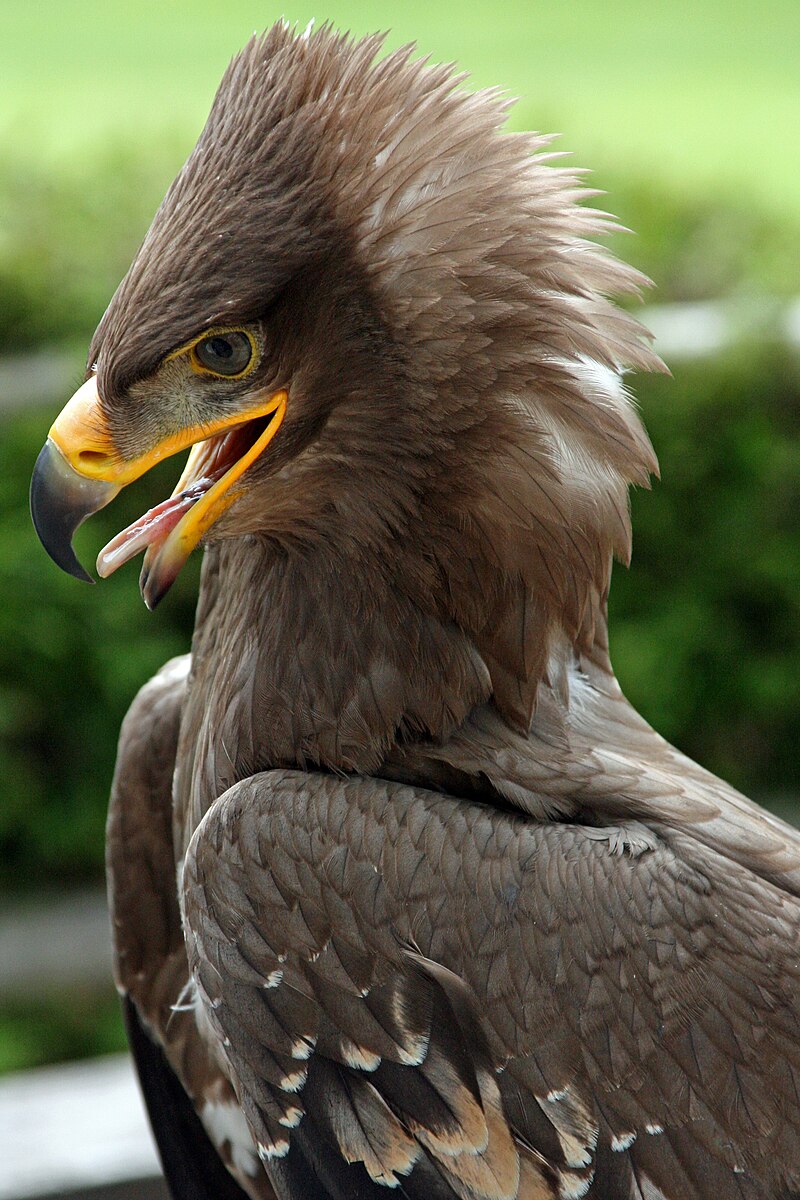The Steppe Eagle (Aquila nipalensis) is a large bird of prey known for its impressive size and distinctive features. Adults can reach up to 89 cm (35 inches) in total length, with a wingspan ranging from 165 to 250 cm (65 to 98 inches). This makes the Steppe Eagle one of the larger eagle species in the world.
The Impressive Size of the Steppe Eagle
The Steppe Eagle is a powerful and majestic bird, with a broad build and a larger head compared to other similar eagle species. Some key measurements of the Steppe Eagle include:
- Weight: Up to 4.6 kg (10 lb) for males and 5.5 kg (12 lb) for females
- Wing Chord: 510 to 610 mm (20 to 24 inches) in males, and 536 to 640 mm (21.1 to 25.2 inches) in females
- Tail Length: 238 to 295 mm (9.4 to 11.6 inches) in both sexes
- Tarsus Length: 85 to 96 mm (3.3 to 3.8 inches)
These measurements highlight the Steppe Eagle’s impressive size and physical characteristics, which are adapted for its hunting and soaring abilities.
Habitat and Behavior of the Steppe Eagle
 Image source: Steppe Eagle by Fimb
Image source: Steppe Eagle by Fimb
The Steppe Eagle is found in the grasslands and steppes of Eurasia, including areas such as Mongolia, Russia, Kazakhstan, and parts of Europe. These birds prefer open habitats with access to water sources, where they can hunt for their prey.
Steppe Eagles are primarily carnivorous, feeding on a variety of small and medium-sized mammals, such as rodents, hares, and foxes. They are also known to scavenge carrion when necessary.
These birds are monogamous, forming long-term pair bonds and building large nests made of sticks and grass on trees or cliffs. The female lays 1-3 eggs, and both parents take turns incubating them for about 45 days.
Conservation Efforts for the Steppe Eagle
Unfortunately, the Steppe Eagle population is facing significant threats, including habitat loss, illegal hunting, and pesticide poisoning. As a result, the Steppe Eagle is currently listed as “Endangered” on the IUCN Red List.
Conservation efforts are underway to protect these magnificent birds and their habitats. This includes measures such as habitat preservation, anti-poaching patrols, and public awareness campaigns.
By understanding the impressive size and unique characteristics of the Steppe Eagle, we can better appreciate the importance of protecting this species and its natural environment.
References
- European Raptors. (n.d.). Steppe Eagle (Aquila nipalensis). Retrieved from https://europeanraptors.org/steppe-eagle/
- Thai National Parks. (n.d.). Steppe eagle (Aquila nipalensis). Retrieved from https://www.thainationalparks.com/species/steppe-eagle
- Facts.net. (2024-03-06). 20 Steppe Eagle Facts. Retrieved from https://facts.net/nature/animals/20-steppe-eagle-facts/
- Wikipedia. (2024-04-23). Steppe eagle. Retrieved from https://en.wikipedia.org/wiki/Steppe_eagle

